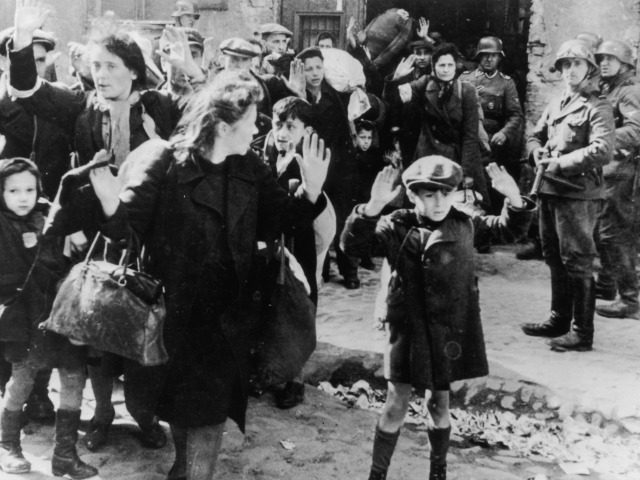WARSAW (AFP) – Eight decades ago, Jewish archivists facing death in the Warsaw Ghetto hid a trove of documents they hoped would bear testimony to the sufferings of the Holocaust.
Now part of the unparallelled archive has gone on display in its first permanent exhibition at the Polish capital’s Jewish Historical Institute.
“This is the greatest Jewish treasure of the war era, a treasure that shows death approaching. It conveys the testimonies of people destined to die in a few weeks, months or hours,” historian and exhibition curator Pawel Spiewak told AFP, ahead of the Ringelblum Archive’s official opening on Thursday.
Jewish historian and activist Emmanuel Ringelblum led a team that collected and hid the documents from the Nazis, burying them in metal milk jugs and boxes.
The team recorded eye-witness testimonies of the horrors of the Warsaw Ghetto, where the Germans imprisoned 480,000 Polish Jews. It was the largest ghetto in Nazi-occupied Europe.
– Counting the dead –
The archive reveals “what we couldn’t convey through our cries and screams,” reads an inscription etched into a grey wall at the entrance of the exhibition.
It is a quote from the last will and testament of 19-year-old Dawid Graber, that was buried with part of the archive on August 3, 1942.
Working with 35 other people in Ringelblum’s team, Graber began documenting the fate of Polish Jews in 1940, a year after Nazi Germany invaded and took over Poland.
The team, known as “Oyneg Shabbes” (“Shabbat Pleasure”), gathered official documents as well as secret newspapers, ration coupons, postcards, medical prescriptions, entertainment handbills, literary texts, advertising leaflets and even candy wrappers.
Later, the team also documented the death toll of ghetto residents, keeping statistics about who had been executed by the Germans, and who had died from hunger or disease.
On April 19, 1943, the Nazis began liquidating the ghetto. Just 60,000 people remained there after most died of hunger or disease or were sent to the Treblinka death camp.
– ‘A miracle’ –
The archive includes letters from Jews documenting massacres and deportations to concentration and death camps like Belzec, Treblinka and Auschwitz.
“They hid it all in metal crates or milk jugs in cellars in the Warsaw Ghetto and it really is a miracle that it was found after the war, the first part in 1946, and the second in 1950,” Spiewak told AFP.
However, some files have not yet been found.
The names of all the “Oyneg Shabbes” secret members are engraved on a huge wooden table in one of the two exhibition halls.
Visitors can read how they lived and how most of them died.
The three members of the team who survived the war were able to recover their hidden work.
Warsaw’s Jewish Historical Institute says that decades passed until it managed to secure enough funding to create an exhibition that would guarantee the archive’s preservation.
– 6,000 documents –
In total around 6,000 documents containing 35,369 pages have been discovered, written in Polish and Yiddish, and sometimes in Hebrew and German.
A Polish translation of the last volume is about to be completed, and the first volume in English is being prepared.
One of the documents on display is the poignant testimony of Jakub Krzepicki. He managed to escape the Treblinka camp where the Nazis killed between 700,000 and 900,000 Jews, mainly from the Warsaw Ghetto.
The location of the exhibition is also symbolic.
Before the war, the area was home to Warsaw’s biggest synagogue and a large Jewish library. Both were destroyed by the Nazis.
After the creation of the ghetto, the building housed the offices of a Jewish self-help group, the only such organisation authorized by the occupiers.
Emanuel Ringelblum worked there, along with several other members of “Oyneg Shabbes”.
Decades later, their archive is now stored and studied in the same place.

COMMENTS
Please let us know if you're having issues with commenting.